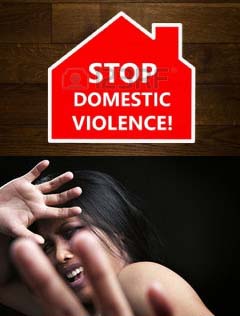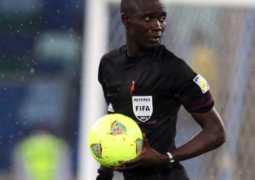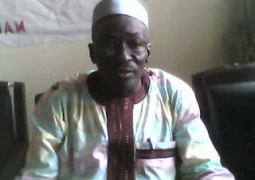
Are
Gambian children at risk?
Each child has the right to his or her physical and personal integrity, and protection from all forms of violence.
Abuse
can occur both at home (housework, punishment, physical abuse, rape sexual
mutilation (FGM) and other traditional harmful abuse to the girls) ,and school(
punishment, discrimination, physical and verbal abuse as well as on the street.
Also
considered are cases of teenage pregnancy, sexual exhibitionism, indecent
assault, HIV- infection following rape, early forced marriage, forced abortion,
forced sexual mutilation, forced prostitution, forced labour.
Children, as human beings, are entitled to
enjoy all the rights guaranteed by the various international human rights
treaties that have developed from the Universal Declaration of Human Rights.1
They are also entitled to the protection laid down in international legal
instruments relating to international criminal, humanitarian and labour law.*
Children
are therefore entitled to the rights and procedures set out in the International
Bill of Rights, consisting of the International Covenants on Economic, Social
and Cultural Rights, and that on Civil and Political Rights.
They
are also entitled to the rights and protections contained in specific treaties,
including those which address the alumina- * further information on all
instruments referred to in this chapter is available at: http://www.ohchr.org.
tion of racial discrimination, discrimination against women, the prevention of
torture, and the rights of migrant workers and members of their families.
These instruments, legally binding on States
which have accepted them, include provisions which are relevant to eliminating
violence against children. Some treaties, in particular the two Covenants, also
contain provisions extending specific protections to children. Thus the
International Covenant on Economic, Social and Cultural Rights includes a
provision requiring that children be protected from economic and social
exploitation, and that the employment of children in work that is harmful to
their morals, or health or dangerous to life, or likely to hamper their normal
development, be punished by law.
The International Covenant on Civil and
Political Rights expressly prohibits the imposition of death sentences on
children and young people under 18. It also includes provisions governing the
proper treatment of accused and convicted children, which in particular require
their separation from the adult(s) accused and offenders. The Convention on the
Elimination of All Forms of Discrimination against Women is fully applicable to
girls under 18 years of age. Article 16.2 of the Convention provides that the
betrothal and marriage of a child shall have no legal effect and that all
necessary action, including legislative action, shall be taken by States to
specify a minimum age for marriage, and to make the registration of marriages
in an official registry compulsory.
Existing protection under international human
rights law will be expanded with the finalisation of treaties regarding
children, on disappearance and disability, currently being concluded. Specific
provisions relating to the human rights of children with disabilities,
including obligations of States to address violence against them, are included
in the draft Convention on the Rights of Persons with Disabilities, which will
be submitted to the General Assembly for adoption at its sixty-first session.
The implementation of each of the seven core human rights treaties currently in
force is monitored by a Committee of Experts through various procedures.
Each reviews implementation thereof through
the consideration of reports submitted by States, and makes recommendations for
further action. Four Committees are empowered to consider petitions from
individuals who allege that their rights have been violated in cases where the
State concerned has accepted this procedure.
Two Committees have competence to conduct
inquiries into grave, systematic or serious violations of the treaty, again in
cases where the State has accepted these procedures. Similar procedures are
contained in the draft treaties on disappearance and disability, while the
Optional Protocol on the Convention against Torture and other Forms of Cruel,
Inhuman and Degrading Treatment or Punishment introduces a system of visits to
places of detention in States parties.
All bodies accepting the treaty have
emphasised the obligations of States to take specific steps to eliminate and
respond to violence against children in their concluding observations, reports,
and in several of their decisions on petitions. Several treaty bodies have also
adopted General Comments or recommendations which outline States’ obligations
to address violence against children.
The Committee on Economic, Social and Cultural
Rights General Comment on the Right to Education indicates that corporal punishment
in an educational setting is inconsistent with international law and the
dignity of the individual. The Committee on the Elimination of Discrimination
against Women has adopted a general recommendation on States’ obligations under
the Convention with regard to female genital mutilation (FGM) and two general
recommendations concerning gender-based violence against women. T
The Convention on the Rights of the Child
Although protections are provided to children by general international human
rights treaties and other international agreements, at an early stage in the
history of the United Nations, the international community recognised the need
to provide specific human rights protection for children.
The General Assembly’s 1959 Declaration on the Rights of the Child set out 10 non-legally binding principles aimed at providing special safeguards for children. The Convention on the Rights of the Child (CRC), which sets out legally binding standards, was adopted by the General Assembly in 1989. The CRC, which signals clearly that children are holders of human rights and acknowledges their distinct legal personality and evolving capacities, is the most widely accepted human rights treaty, having been ratified or acceded to by 192 States. Its 42 substantive articles set out civil, political, economic, social and cultural rights, formulated to address the special needs of the child, defined by the CRC as every human being under the age of 18, unless majority is attained earlier under national law.2
The CRC sets up a framework of legal
principles and detailed standards which should govern all law, policy and
practice affecting children. These include the promotion of prevention of
violence, and responses to protect all children from all forms of violence.
Various articles of the CRC assert the rights
of children to physical and personal integrity, and establish high standards
for protection. Article 19 requires that States which are parties to the CRC
take “all appropriate legislative, administrative, social and educational
measures to protect the child from all forms of physical or mental violence,
injury or abuse, neglect or negligent treatment, maltreatment or exploitation,
including sexual abuse, while in the care of parent(s), legal guardian(s), or any
other person who has the care of the child.”
The breadth of this obligation has been
emphasised by the Committee on the Rights of the Child. The Committee has also
underlined the requirement that all violence against children be prohibited.
This includes all forms of corporal punishment, however light. The Committee’s
General Comment No. 8 on the Right of the Child to Protection from Corporal
Punishment and Other Cruel or Degrading Forms of Punishment, adopted at its
forty-second session in June 2006, highlights the obligation of all States to
move quickly to prohibit and eliminate all corporal punishment and other cruel
or degrading forms of punishment of children, focusing on the legislative,
awareness-raising and educational measures that States must take.3 The General
Comment makes clear that the Committee does not reject the positive concept of
discipline, and recognises that parenting and caring for children, especially
babies and young children, demands frequent physical action and intervention to
protect them. The Committee indicates that this is quite distinct from the
deliberate and punitive use of force to cause some degree of pain, discomfort
or humiliation to children.
Regional human rights systems The
international legal framework for the promotion and protection of human rights
and the standards that it provides in respect of violence against children are
reinforced by treaties which have been adopted regionally, by the Council of
Europe, the European Union, the Organization of American States, the African
Union, and mechanisms established to monitor and enforce them.
The African Charter on the Rights of the Child
is particularly relevant, as is the African Protocol on the Rights of Women
adopted in 2004 which contains provisions directed at the elimination of
harmful traditional practices, including female genital mutilation (FGM),
scarification, medicalisation of harmful traditional practices, and establishes
18 years as being the minimum age for marriage. Regional human rights
mechanisms, responsible for the oversight of these legal instruments have
addressed various forms of violence against children.
For example, the European Court of Human
Rights has found violations of the European Convention on Human Rights in a
number of judgements concerning cases of corporal punishment in the penal
system, schools and the home.13 Other judgements of the Court have concerned
sexual abuse, failures of child protection systems and juvenile justice.14 The
European Committee of Social Rights, which monitors compliance with the
European Social Charter and the Revised Social Charter, has held that these
instruments require prohibition in legislation of any form of violence against
children.
Where violence against children is concerned,
Governments are required to take immediate and positive steps to prevent and
eliminate all forms of violence against children and to
The Child Protection Alliance (CPA)
Representative in The Gambia, which supported by UNICEF emphasized in a
workshop on sensitization on “violence against children in the Gambia” sharing
the main finding and recommendations of the United Nations on this important
issue in The Gambia on 20 March 2009.
According
to the CPA the global study examines the nature, scope of violence against
children in the home and families, schools and educational settings, care and
justice institutions, places of work and in the communities.
For further information contact the Child
Protection Alliance, Action Aid, UNICEF and Dr Azadeh by only text messages ON:
7774469/3774469.
Author DR AZADEH Senior Lecturer at the
University of the Gambia Senior Consultant in Obstetrics & Gynaecology,
Clinical Director at Medicare Health Services




